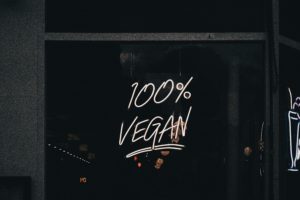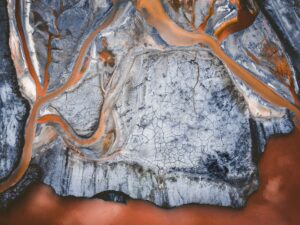- The Meaning of Critical Thinking: A Key Skill for Navigating Today’s Information Landscape - November 3, 2025
- Grandparents Can Develop Activist Grandchildren - September 29, 2025
- Top Six Reasons Credit Union Benefits Are a Smart Choice Over Banks - August 18, 2025
Last Updated on January 21, 2025
A seed library helps preserve our seeds of life. Seed-saving, especially wild seeds, increases biodiversity, improves local varieties, and preserves food heritage.
My experience volunteering for my local seed library has been so fun and has helped me better understand our seeds of life.
As one of my tasks, I reviewed Bevan Cohen’s Saving Our Seed: The Practice & Philosophy. His reminder that 90% of our food comes from seeds is sobering, given that commercial agriculture controls most of our food supply and 75% of varieties have disappeared. My post outlines all the critical ways to consider our seeds of life. But the bottom line is that wild seed-saving increases biodiversity, improves the supply and quality of local varieties, and preserves food heritage.
And seed libraries are a critical part of making that happen.
What Is a Seed Library and Why Do I Need Free Seeds of Life?
‘Seed library’ is a strange title because it sounds like you check out seeds and bring them back in 3 weeks. Or get a fine.
But the reality is sort of the same. Instead, you check out a packet of seeds, try them in your garden, and save seeds at the end of the season. Then you bring those seeds back to the library to share with others. And best of all, no fines are involved.

A seed library usually has something like an old card catalog cabinet with seed packets instead of cards showing a book location. Each seed library has rules about how many packets you can take, but they are always free.
Most seed libraries also include educational materials to help people start gardening. You may be able to pick up literature about wild seeds, what is easy to grow, and varieties that work well in pots. Sometimes seed libraries are surrounded by gardening and seed-saving books patrons can check out.
Seed libraries are different from seed banks. You may have heard about the doomsday vault in Norway, where seeds are stored long-term in case of a global disaster. A chilling thought, but thank goodness they are there.
However, seed banks are different from saving and trading seeds locally. Seed libraries help keep seed lineages alive and to adapt your area’s ecosystem.
What Is a Native Seed Library?
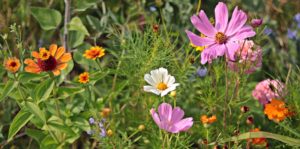
This is important because native seeds and pollinator plants have a critical ecological impact. But they are also friendlier to your wallet because they require fewer fertilizers and soil enhancements. And it also helps you understand your local history and ecosystem. Yes, it is fun to grow varieties that are not native or pollinator-friendly. However, your impact is much more significant if you choose seeds adapted to your area.
You can find a list of native plants in your area at these sites:
National Wildlife Foundation’s Native Plant Finder
Pollinator Partnership’s Ecoregional Planting Guides
The Xerces Society’s Pollinator Conservation Resources
I assure you that you’ll find flowers, vegetables, and herbs that will tickle your fancy as much as a nonnative. Wild seeds are wonderful.
Other Ways to Exchange Seeds
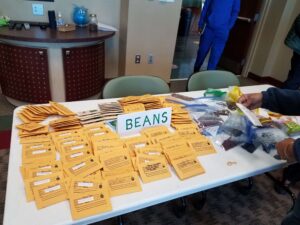
My library holds seed swaps in January. Several years ago, the swap was scheduled for a Saturday after an ice storm. When I arrived early to volunteer, I practically had to crawl in to avoid slipping. We figured no one would show up.
Three hundred people showed up on that icy day. It was a joyful morning, despite the weather.
Some people came to hear a speaker talk about winter seed sowing. Winter seed sowing means starting seeds in milk jugs and letting them sit out all winter. You don’t have to do anything else. In spring, you’ll have hardy seedlings that are already used to adverse conditions.
I enjoyed talking with a teenager who had just developed a passion for seed saving. He brought a shoebox of seed packets to share. Throughout the day, I saw him chatting about gardening with people of all ages. And when the seed library opened on February 1st, he was there to check out his monthly allotment of 5 seed packets.
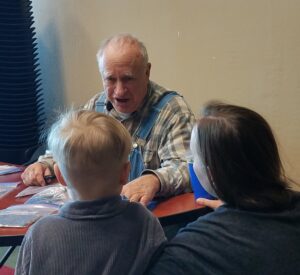
Sometimes swaps have seed-saving rock stars. I’m lucky to live near the Blackberry Farm resort where seed-saver John Coykendall works. And he comes to our seed swaps.
A Seed-Saving Rock Star
John Coykendall looks unassuming in his usual worn-out overalls. But as he takes his place at a seed swap table, people gather to hear his stories and take his seed packets. And my favorite part is he talks with kids about the wonder of seeds.
John also authored Preserving Our Roots: My Journey to Save Seeds and Stories (The Southern Table.)
This short video features John and his work on preserving seed varieties.
Seeds of Life Must be Preserved: A Form of Everyday Activism
Bevan Cohen says seed saving is the most important work we can do. He calls people who collect and share seeds ‘seed keepers.’ I like that term because it implies a sort of stewardship of the seed lineage and a commitment to its long-term adaptation. It is a wonderful act of everyday activism.
Each seed tells a story. They are genuinely seeds of life.
[Use the buttons on the bottom to share this post with a gardener friend!]
READ NEXT
How to Save the World by Saving Seeds
Seeds of Hope: How You Can Battle Climate Change With Gardening
How White People Can Go Beyond Land Acknowledgment To Support Indigenous People
Support the Environment: Landscape Ideas to Delight You and Wildlife

